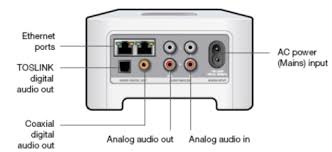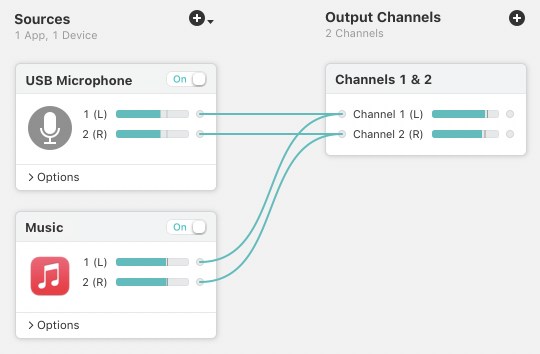

- #How to create audio loopback connection update
- #How to create audio loopback connection manual
- #How to create audio loopback connection software
Skip-probe=yes # since you know what your sound card has, there is no need for checking which sinks are available Paths-input = analog-input-front-mic analog-input-rear-mic analog-input-internal-mic analog-input-dock-mic analog-input analog-input-mic analog-input-linein analog-input-aux analog-input-video analog-input-tvtuner analog-input-fm analog-input-mic-line analog-input-headphone-mic analog-input-headset-mic Paths-output = analog-output analog-output-lineout analog-output-speaker analog-output-headphones analog-output-headphones-2 usr/share/pulseaudio/alsa-mixer/profile-sets/nfĪuto-profiles = no # disable profile auto-generation Copy nf to nf, and edit it to suit your needs (this example is for stereo output/input):

The best way to overcome this is by writing a custom config with disabled auto-profiles. This way a defined profile is added to the end of the list of available profiles.Īlthough this works, pulseaudio has a nasty habit of falling back to auto-generated profiles, so you may eventually need to set your card back to the combined profile. Output-mappings = analog-stereo iec958-stereo # Profile must be a '+' separated list of relevant mappings configured aboveĭescription = Analog and digital stereo output and analog stereo intput usr/share/pulseaudio/alsa-mixer/profile-sets/nf. The easiest way to make both outputs available is to add a combined profile to the end of default profile configuration file: Pulseaudio does not generate combined profiles by default, you can choose either digital or analog profiles. Sound cards may have both analog and digital (iec958) outputs.
#How to create audio loopback connection software
Reason: /usr/share/pulseaudio/alsa-mixer/paths has been replaced by /usr/share/alsa-card-profile/mixer/paths (Discuss in Talk:PulseAudio/Examples#Having both speakers and headphones plugged in and switching in software on-the-fly) Independent analog and digital outputs on the same card You can test your configuration by running pactl set-card-profile. Set-card-profile alsa_card.pci-0000_00_14.2 output:analog-stereo+output:iec958-stereo+input:analog-stereo In this case, default.pa should now be changed to this: $ pacmd list-cards | grep 'active profile' To find, set the desired profile manually, then run pacmd list-cards : In this case, I want to use the device with index number 2, so should be alsa_card.pci-0000_00_14.2. is dynamic, and changes when a new device is plugged in.

You could also use instead of, but using ensures referencing the correct device. This syntax works for default.pa, nf and system.pa, even if the latter makes no sense as a user configuration file. User client configuration file example ~/.config/pulse/nf.
#How to create audio loopback connection update
For simple changes the latter is preferred because the user will not be required to update the file when system-wide defaults change. This can be done either by copying the system file under /etc/pulse to the user's configuration directory, or by creating a new file that includes it with the syntax. For the examples below which modify the user's configuration file it may be necessary to first create the file. System-wide configuration files are located under /etc/pulse while user configuration files are located under $XDG_CONFIG_HOME/pulse, which defaults to ~/.config/pulse. 22.1 PulseAudio management with pulse-autoconf.22 Mixing additional audio into the microphone's audio.21 Allowing multiple users to share a PulseAudio daemon.20 Having both speakers and headphones plugged in and switching in software on-the-fly.19 PulseAudio as a minimal unintrusive dumb pipe to ALSA.16.5 Remap left (or right) input to mono for stereo use.13.2 After I start JACK the sound from PulseAudio becomes distorted.13.1 When JACK is started Firefox, Chrome and other apps stop playing video and audio.
#How to create audio loopback connection manual



 0 kommentar(er)
0 kommentar(er)
